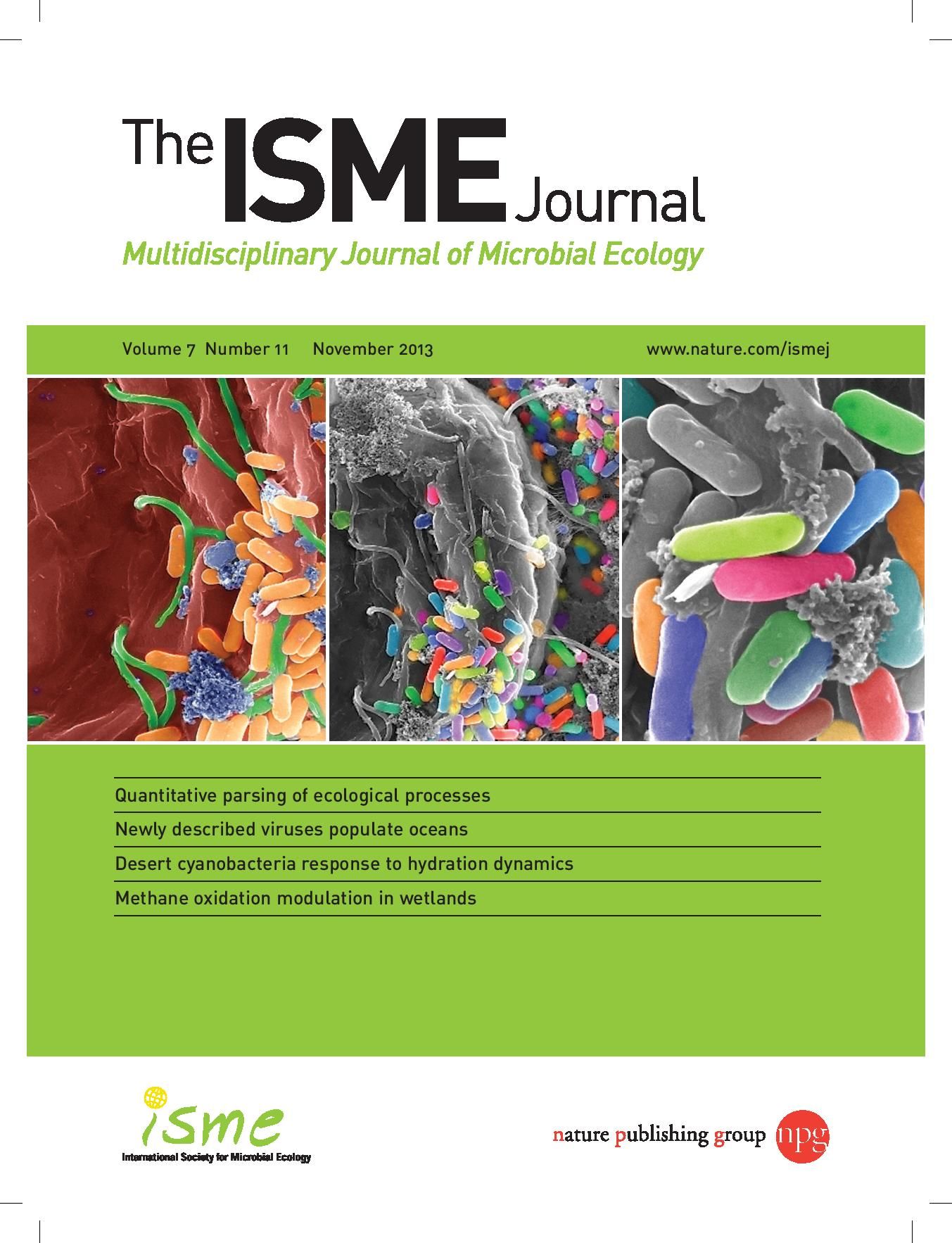Nitrogen fixation and diazotroph diversity in groundwater systems
IF 10.8
1区 环境科学与生态学
Q1 ECOLOGY
引用次数: 0
Abstract
Biological nitrogen fixation (BNF), the conversion of N2 into bioavailable nitrogen (N), is the main process for replenishing N loss in the biosphere. However, BNF in groundwater systems remains poorly understood. In this study, we examined the activity, abundance, and community composition of diazotrophs in groundwater in the Hetao Plain of Inner Mongolia using 15N tracing methods, reverse transcription qPCR (RT-qPCR), and metagenomic/metatranscriptomic analyses. 15N2 tracing incubation of near in situ groundwater (9.5–585.4 nmol N L−1 h−1) and N2-fixer enrichment and isolates (13.2–1728.4 nmol N g−1 h−1, as directly verified by single-cell resonance Raman spectroscopy), suggested that BNF is a non-negligible source of N in groundwater in this region. The expression of nifH genes ranged from 3.4 × 103 to 1.2 × 106 copies L−1 and was tightly correlated with dissolved oxygen (DO), Fe(II), and NH4+. Diazotrophs in groundwater were chiefly aerobes or facultative anaerobes, dominated by Stutzerimonas, Pseudomonas, Paraburkholderia, Klebsiella, Rhodopseudomonas, Azoarcus, and additional uncultured populations. Active diazotrophs, which prefer reducing conditions, were more metabolically diverse and potentially associated with nitrification, sulfur/arsenic mobilization, Fe(II) transport, and CH4 oxidation. Our results highlight the importance of diazotrophs in subsurface geochemical cycles.


地下水系统中的固氮和重氮菌多样性。
生物固氮(BNF)是将N2转化为生物可利用氮(N),是补充生物圈中氮损失的主要过程。然而,对地下水系统中的BNF仍知之甚少。在本研究中,我们使用15N示踪方法、逆转录qPCR(RT-qPCR)和宏基因组/宏转录组分析检测了内蒙古河套平原地下水中重氮菌的活性、丰度和群落组成。15N2示踪近原位地下水的培养(9.5-585.4 nmol N L-1 h-1)和N2固定物富集和分离物(13.2-1728.4 nmol N g-1 h-1,通过单细胞共振拉曼光谱直接验证),表明BNF是该地区地下水中不可忽略的N来源。nifH基因的表达范围为3.4 × 103至1.2 × 106拷贝L-1,并且与溶解氧(DO)、Fe(II)和NH4+密切相关。地下水中的固氮菌主要是需氧菌或兼性厌氧菌,以Stutzerimonas、Pseudomonas、Paraburkholderia、Klebsiella、Rhodopseudomonas、Azoarcus和其他未培养种群为主。活性重氮菌更喜欢还原条件,代谢更多样,可能与硝化作用、硫/砷迁移、Fe(II)转运和CH4氧化有关。我们的研究结果强调了重氮菌在地下地球化学循环中的重要性。
本文章由计算机程序翻译,如有差异,请以英文原文为准。
求助全文
约1分钟内获得全文
求助全文
来源期刊

ISME Journal
环境科学-生态学
CiteScore
22.10
自引率
2.70%
发文量
171
审稿时长
2.6 months
期刊介绍:
The ISME Journal covers the diverse and integrated areas of microbial ecology. We encourage contributions that represent major advances for the study of microbial ecosystems, communities, and interactions of microorganisms in the environment. Articles in The ISME Journal describe pioneering discoveries of wide appeal that enhance our understanding of functional and mechanistic relationships among microorganisms, their communities, and their habitats.
 求助内容:
求助内容: 应助结果提醒方式:
应助结果提醒方式:


